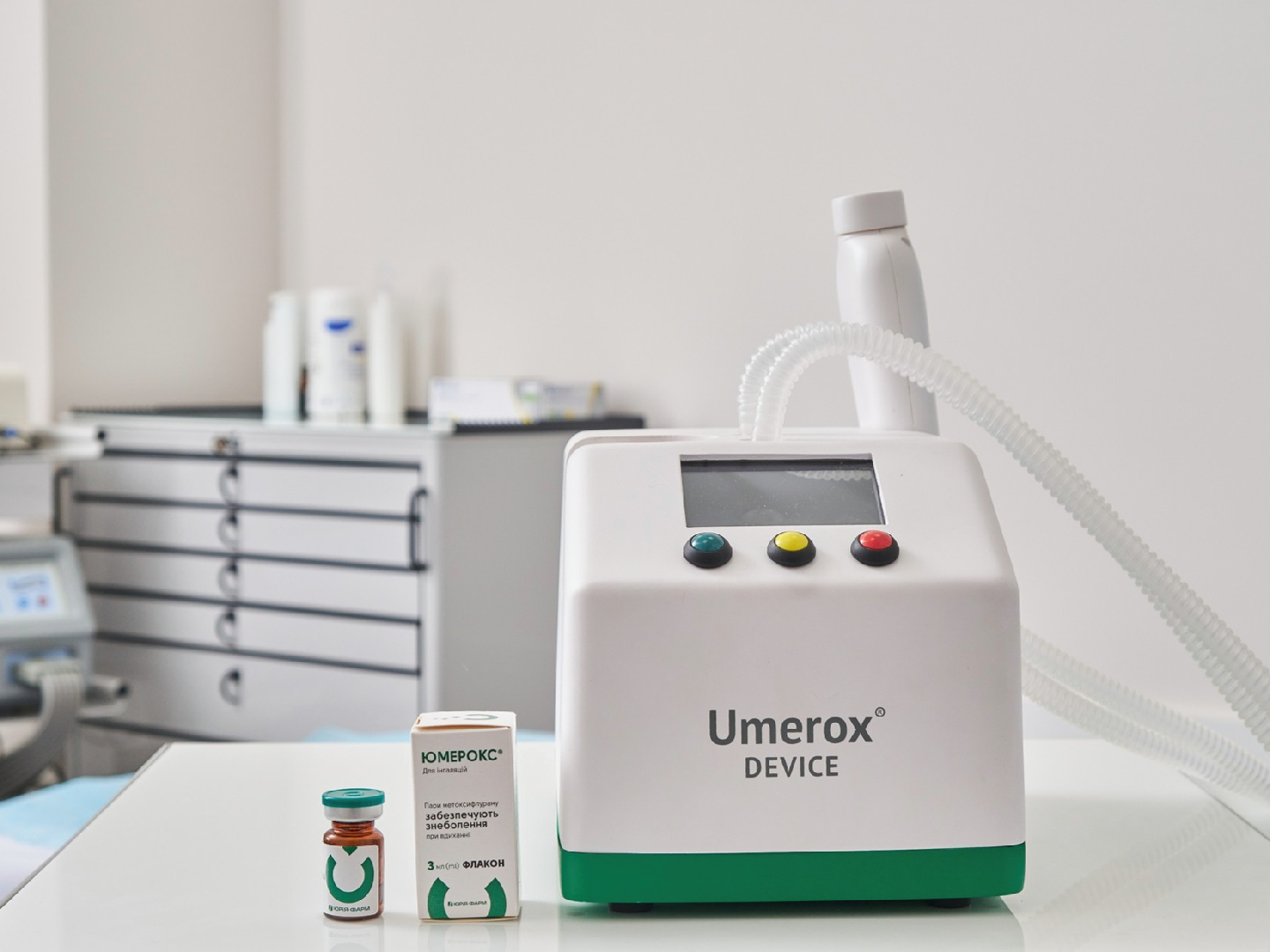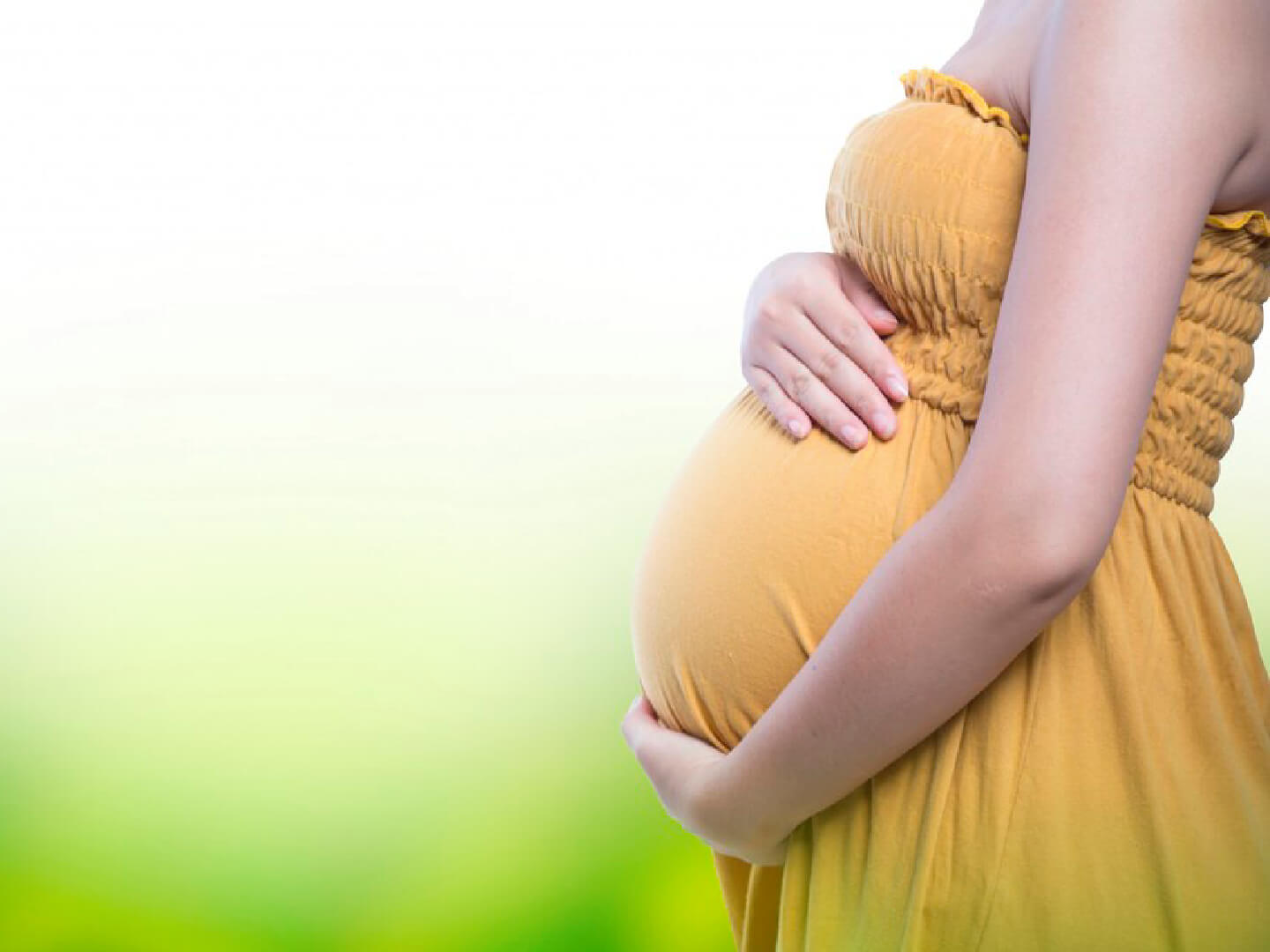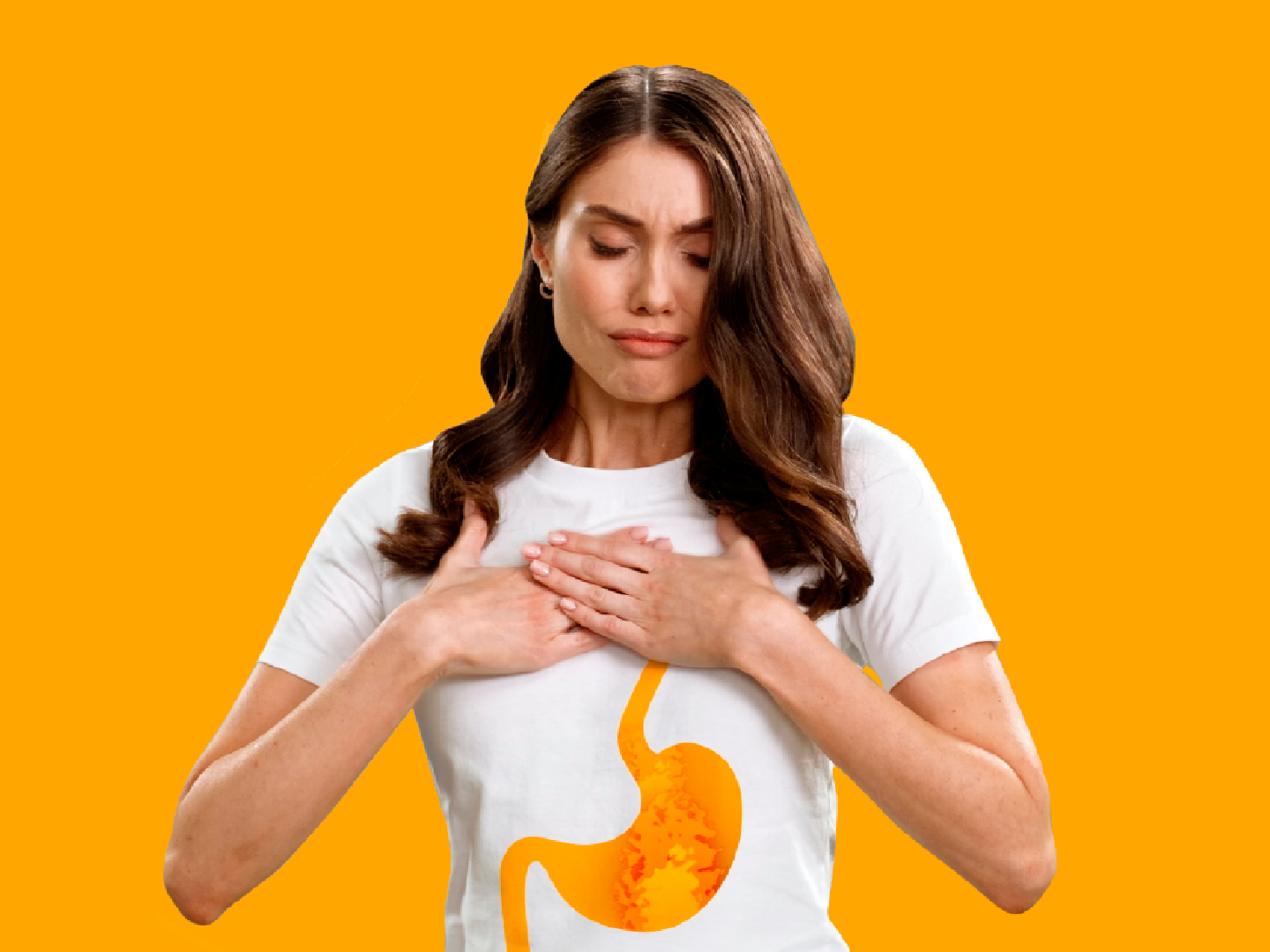The prevention of infectious complications of caesarean section in the context of the global rise of antibiotic resistance

Abstract. In the context of the global rise of antibiotic resistance, optimising the prevention of infectious complications of caesarean section (C-section) with a reassessment of the guidelines for ultra-short antibiotic regimens is becoming increasingly relevant. In light of the current data on the negative effects of receiving antibiotics by the mother on the child’s microbiota, topical agents are becoming increasingly important as they don’t pass on to the child, they are less likely to cause resistance, as well as they have a wider range of antimicrobial activity.
Research aim is to provide clinical evidence for the prevention of infectious complications of C-section by local application of the topical agent Decasan.
Materials and methods. A comparative study of two homogeneous groups of women of low infectious risk delivered by elective C-section was carried out. In the 1st group (55 women), Decasan was used at all stages of abdominal delivery: preoperative treatment of the skin and vagina, perioperative irrigation of the inner surface of the uterus, uterine sutures, and subcutaneous tissue. In the 2nd group (55 observations), conventional antibacterial prevention was performed. In the process of clinical and microbiological parallels, ultrasound monitoring of uterine involution, examination on the 42nd day, and information on the condition of the newborn child were used.
Results. In both groups, there was an absence of infectious complications of the puerperium, surgical site infection, tendencies and signs of inflammatory reactions. In the 2nd group, 5.5% of patients had partial skin suture dehiscence due to seroma formation and transient infiltration of the subcutaneous tissue. The absence of such symptoms in the 1st group should be considered a consequence of the cytoprotective effect of Decasan. The use of Decasan has pharmacoeconomic advantages over antibiotic prophylaxis schemes.
Conclusions. The use of Decasan in the perioperative care of С-section combines the possibilities of a safe reduction in the use of antibiotics, effective antiinfective protection with guaranteed safety for the child.
Keywords: caesarean section (C-section), infectious complications, antibiotic resistance, topical agent Decasan.
Article. As indications for abdominal delivery are broadened to reduce maternal and perinatal mortality rates, cesarean section (CS) has become the most common surgical intervention in routine clinical practice [1]. 50 CS procedures are performed every minute all over the world. Annually, nearly 18.5 million abdominal delivery surgeries are performed worldwide, and it is estimated that by 2030, the global cesarean section rate will increase to 38 million [2-4].
In most cases, CS is performed in healthy women who do not need antibacterial therapy and the measures to prevent infectious complications are appropriate.
An integral part of the strategy for safe CS is the prevention of infectious complications in a pregnant woman through prophylactic preoperative administration of antibiotics (ABs) [5]. The objective of antibiotic prophylaxis (ABP) during CS, as with other surgical interventions, is not to eradicate a specific infectious agent or achieve tissue sterility, but to reduce microbial colonization to a level where a patient’s immune system can effectively manage it under the surgical stress [6].
For nearly 30 years, standardized ABP protocols have remained relevant. They included administration of cefazolin (2 g), or penicillin/ampicillin, or clindamycin with gentamicin 60 minutes before the skin incision in all cases of CS. A repeated dose of AB may be administered after 3 hours, but reliable evidence supporting such practice has not been obtained [7, 8].
The benefits of AB prophylaxis during CS are unquestionable [9]. The use of ABs during CS has been clinically proven to reduce the rates of wound infection, endometritis, etc. by 60 to 70% compared to placebo or no prophylaxis [10].
The debatable question regarding the best period of prophylactic AB use (60 minutes before the skin incision or after umbilical cord clamping) received reliable evidence in favor of the preoperative period. A high-quality systematic review demonstrated that preoperative AB administration provides therapeutic concentrations in the tissues at the possible site of infection during the incision and throughout the procedure.
Women who received ABs before surgery had a 28% lower probability of infectious complications (a 43% lower risk of endomyometritis and/or endometritis, a 38% lower risk of wound infection) compared to those who received AB after umbilical cord clamping [11, 12]. Nevertheless, when AB reaches high therapeutic concentrations in a pregnant woman, a corresponding level may be reached in fetal tissues. The potential outcomes of this requires further clarification and should be the focus of dedicated studies.
Notably, over nearly thirty years, the widespread adoption of the ultra-short ABP regimens for cesarean section led to significant transformations in the relationships between macro- and microorganisms. Recently, there have been shifts in the reactivity of the population-scale macroorganism, alongside the evolution of pathogens developing biochemical mechanisms in response to AB effects and genetic variability. This has impacted the interaction of the body’s microbiota with the human immune, endocrine, and nervous systems.
Antibiotic resistance is a specific concern that has recently prompted a re-evaluation of antibiotic prescribing practices. Since 2000s, the WHO has identified antibiotic resistance as a hidden epidemic and a growing threat to humanity [13, 14]. It is crucial to understand that antibiotic resistance is a property of microbes, not individuals infected by them; thus, a person can not develop resistance to ABs.
Secondary to antibiotic resistance, bacteria, viruses, fungi and parasites may no longer respond to ABs, and the latter become not only ineffective (acting like placebos), but even toxic, and infections become poorly manageable or unmanageable.
The origin of this phenomenon lies in the widespread uncontrolled use of ABs in medicine and agriculture [12]. Growing antibiotic resistance as a global challenge is associated with several factors including self-medication, empirical selection of therapy, violations of treatment protocols, the use of short-term regimens, and the use of a lower “preventive” doses compared to therapeutic regimens.
Recently, the relationship between the perinatal exposure to ABs, including during CS, and immune conditions in a baby has been recognized. Long-term consequences include significant changes in the intestinal microbiota of babies, leading to dysbiosis at 3 and 12 months of age. This condition is associated with an increased risk of asthma, atopic and allergic diseases, and food allergies, which negatively impact the quality of life over the long term [15-17].
The effect of ABs during CS on a newborn’s microbiota is attributed to a dual mechanism [18].
First, when administered before the incision, ABs enter the bloodstream of a fetus through the placenta prior to birth. Second, following a single intravenous administration regardless of the timing, ABs are present in high concentrations in the mother’s blood. During the early stages of lactation, the drug enters the colostrum, and due to the presence of large gaps in the alveoli of the milk ducts, antibiotics are transmitted to a newborn through breast milk in subtherapeutic concentrations. Consequently, the numbers of bifidobacteria and lactobacteria, which are crucial for protection against allergies, decrease in breast milk. Simultaneously, the composition of milk microbiota tends to be less diverse, yet it includes bacteria that are absent in mothers who were not exposed to ABs.
Considering these findings, observational studies assessing the feasibility of CS without the use of antibiotics have recently been initiated. It is emphasized that this approach is appropriate for facilities with a generally low rate of wound infection following CS. It should involve women at low risk of infection and provide careful clinical monitoring focused on early detection of wound infection, endometritis, or urinary tract infection [17, 18].
Therefore, it can be stated that improving approaches to preventing infectious complications of CS is a relevant issue. This calls for the development of balanced solutions, periodic re-assessment of established guidelines, and accumulation of evidence supporting other relevant measures that provide maternal efficacy while ensuring safety for a baby.
Antiseptics serve as an alternative to ABs for preventing puerperal (postpartum) infections. Antiseptics are less specific than antibiotics but offer some advantages. Due to their multi-faceted mechanism of action, pathogens do not typically develop resistance to antiseptics, ensuring efficacy in cases of mixed bacterial infections.
Surface-active substances have proven effective as antiseptics, utilizing a mechanism of action based on their diphilic molecular structure and capacity to disrupt the membranes of prokaryotes. Decamethoxine deserves special attention among the agents in this group.
Decamethoxine demonstrates a broad spectrum of antimicrobial activity against pathogens responsible for most nosocomial infections, exhibiting high adaptability and mobility. These pathogens are collectively known by the acronym ESKAPE (Enterococcus faecium, Staphylococcus aureus, Klebsiella pneumoniae, Acinetobacter baumannii, Pseudomonas aeruginosa, Enterobacteriaceae). The drug is active against yeast-like fungi, dermatomycetes, and viruses as well.
In addition, treatment with Decasan (0.02% decamethoxine) increases the susceptibility of antibiotic-resistant microorganisms to ABs. Decasan (0.02% decamethoxine) is successfully used in the treatment of purulent-septic processes in surgery, burn care, dentistry, urology, ENT, etc. [19-21].
Decamethoxine solution (0.02% concentration) possesses a broad antimicrobial spectrum and does not exhibit cytotoxic or proapoptotic effects on the epithelium, even with prolonged use [22]. Due to its cytosafety, Decasan is approved for the use in sanitizing abdominal cavity, mucous membranes, and open wounds.
The ability of an antiseptic to penetrate the systemic bloodstream, placenta, and breast milk is recognized as an important characteristic. Since decamethoxine is a surface-active substance, and therefore does not enter the systemic circulation, this justifies its safe use during pregnancy and lactation.
This study aims to determine whether reducing the frequency of ABs use by utilizing decamethoxine as a preventive measure against infectious complications of CS is feasible and safe.
Aim: to provide clinical evidence supporting the prevention of infectious complications following CS through the perioperative topical application of Decasan without the use of conventional ABP.
Materials and methods
The City Clinical Maternity Hospital No.6 of the Kharkiv City Council was selected as a study center for conducting this clinical study.
Study design: a comparative clinical and microbiological analysis of the outcomes in abdominal childbirth among selected groups.
The study included 110 women who underwent elective CS. They were divided into two groups (55 subjects each) based on the extent of measures taken to prevent postoperative infectious complications.
Group 1 received perioperative care with Decasan (Yuria-Pharm LLC, Ukraine), which contains 0.2 mg of decamethoxine per 1 mL. The protocol for Decasan use included preoperative treatment of the vagina, treatment of the operating field, perineum, inner surface of the thighs in the operating room, perioperative treatment after birth of the child and the placenta , involving irrigation of the inner surface of the uterus before suturing, as well as moistening the visceral peritoneum with a bandage soaked in Decasan during uterine suturing. 100 mL of Decasan was used for one treatment (50 mL before surgery, 50 mL intraoperatively).
Control group (group 2) received conventional ABP (first generation inhibitor-protected aminopenicillins or cephalosporins which were administered once intravenously in an average therapeutic dose) [23].
Surgeries were conducted at a level II obstetrical hospital with a low overall incidence of wound infections following cesarean sections. The operating unit was equipped with supply-exhaust ventilation and adhered to stringent antiseptic requirements. The staff followed current methods for instrument sterilization, hand hygiene, and the use of disposable operating room drapes. Optimizing surgical techniques ensured minimal procedure duration, reduction of blood loss, and reasonable use of suture material.
Written informed consent was obtained from all study subjects. Institutional Ethics Committee recognized the study as ethically acceptable.
The inclusion criteria were as follows:
- no history of chronic medical conditions and gynecological infectious diseases;
- no severe extragenital anomaly;
- current pregnancy not complicated by vaginal bleeding, inflammatory processes of the urinary tract.
In isolated cases, vaginal candidiasis and bacterial vaginosis were diagnosed in the first half of pregnancy.
Elective CS was conducted in full-term pregnancy with a single fetus under various indications: 15 cases due to pelvic presentation, 5 cases due to transverse or oblique fetal position, 32 cases due to “operated uterus” condition (30 women with a history of CS, 2 subjects who underwent myomectomy), 22 cases due to pelvic narrowing or anomalies, with post-traumatic spine changes, 12 cases due to abnormal placental location, 24 cases due to a combination of unfavorable factors, and 12 cases based on perinatal indications.
During preoperative counselling, 28 women in the group 1 made a conscious choice in favor of local use of Decasan, while 27 women unequivocally refused AB prophylaxis.
Clinical follow-up included monitoring body temperature and hemodynamics on the 1st and 3rd days, assessing uterine involution rates monitored both via general methods and ultrasound on the 3rd day, evaluating uterine and abdominal wall suture conditions, recording the number of postoperative bed days, assessing the need for re-hospitalization, and monitoring lactation. All patients were invited for examination on the 42nd day after abdominal delivery.
Clinical and microbiological methods included bacteriological examination of secretions from the posterolateral vaginal vault prior to CS, as well as intraoperative cultures from the endometrium in the lower segment of the uterus following delivery of the baby and the placenta (selected patients, 15 cases per each group). The results were evaluated both quantitatively and qualitatively.
During data processing, mathematical methods of statistical analysis of clinical study data included variance analysis, Student’s t-test, Fisher’s tests, relative risk (RR) with a 95% confidence interval (CI), the significance of which was determined at p<0.05.
Results and discussion
Clinical characteristics of the women enrolled in the study are presented in Table 1. As evidenced by the data, the groups did not differ in the baseline clinical parameters.
Table 1
Clinical characteristics of the study subjects
|
Clinical parameters |
Group 1 |
Group 2 |
|
Age, years |
32 (28–39) |
32 (30–36) |
|
First delivery, n (%) |
33 (60) |
30 (54.5) |
|
Body mass index before pregnancy, kg/m3 |
24.9 (22.4–28.2) |
25.6 (20.2–30.5) |
|
Gestational diabetes (yes), n (%) |
2 (3.6) |
3 (5.5) |
|
Gestational age at delivery, wks |
38.1 (37.1–39.3) |
39.2 (37.7–40.2) |
|
Body weight of the baby, g |
3,820 (3,190–4,050) |
3,580 (2,910–3,930) |
Note. Between study groups, there were no statistically significant differences in the compared parameters.
Based on the bacteriological examination of vaginal secretions, the predominant symbionts included Lactobacillus spp., with no differences in the incidence between the groups. The groups did not differ in the incidence of facultative anaerobes (66% of samples with predominated coagulase-negative staphylococci), E. coli (24.5%), Enterococcus faecalis (12.7%), Klebsiella spp. and Peptodtreptococcus spp. (9.1% each). The quantitative characteristics of the vaginal biotope were similar in both groups. Coagulase-negative staphylococci were more frequently detected in repeat pregnancies compared to first pregnancies (56% versus 32.5%).
None of the study subjects complained of abnormal vaginal secretions, suggesting physiological type of vaginal biotope characterized by a predominance of lactobacillary flora, even in the presence of opportunistic microorganisms.
During the bacteriological examination of endometrial cultures, microbial growth was not observed in 7 out of 15 women in the group 1 and in 5 out of 15 women in the group 2 (47% and 33.3%, respectively; RR 0.44 with 95% CI: 0.14–2.5; p >0.05). E. coli, and St. epidermidis, St. aureus, Klebsiella spp. from coagulase-negative staphylococci were identified in the remaining cultures. The quantitative characteristics of microorganisms in the uterine mucous membrane did not differ significantly between the groups and indicated minimal microbial load.
The correlations between the vaginal and endometrial biotopes were demonstrated by the co-existence of E. coli, St. epidermidis, Klebsiella spp. in both loci of the genital tract.
The characteristics of the surgeries are summarized in Table 2, which additionally confirms the homogeneity of the two clinical groups.
In cases of repeated CS, an intrauterine balloon was used solely for prophylactic purposes to maintain the tone of the lower segment and the drainage function of the uterus. This intervention was conducted for a maximum period of 2 hours, with no expectation of abnormal blood loss and under postoperative ultrasound control.
The postoperative period was not complicated by uterine hypotonus or bleeding in all cases. Episodes of subfebrile body temperature on the 1st day were reported in 21.7% of patients in the group 1 and in 27.3% in the group 2, which we interpreted as resorption fever and a sign of dehydration.
On the 1st day in both groups, measures of general blood count, primarily WBC counts, WBC differential, were determined at the level of 6 to 8*109/L in 25.5% of cases in the group 1, in 30.9% of cases in the group 2, at the level of 9 to 15*109/L in 69.1% and 56.4%, respectively, and at the level of 16 to 20*109/L in 5.5% and 12.7%, respectively.
The specific gravity of segmented neutrophils up to 10% was found in 89.1% of patients in the group 1 and in 80% of patients in the group 2. Changes in the hemogram on the 3rd day included a decrease in WBC counts to a level below 10*109/L in 96.4% of women in the group 1 and in 94.5% of women in the group 2, along with a normalization of segmented neutrophils in all cases.
Table 2
The characteristics of the surgeries in study subjects, n (%)
|
Parameters |
Group 1 |
Group 2 |
|
Duration of intervention: |
|
|
|
• up to 30 min |
3 (5.4) |
2 (3.6) |
|
• 30–60 min |
50 (90.9) |
49 (89.1) |
|
• >60 min |
2 (3.6) |
4 (7.3) |
|
Anesthesiological guide: |
|
|
|
• neuraxial anesthesia |
48 (87.3) |
45 (81.8) |
|
• intravenous with mechanical ventilation |
7 (12.7) |
10 (18.2) |
|
CS complications: |
|
|
|
• adhesive process |
4 (7.3) |
6 (10.9) |
|
• ovarian tumor, cystectomy |
1 (1.8) |
– |
|
• myomectomy |
2 (3.6) |
3 (5.5) |
|
Blood loss: |
|
|
|
• up to 500 mL |
40 (72.7) |
43 (78.2) |
|
• 500–1,000 mL |
15 (27.3) |
12 (21.8) |
|
Use of an intrauterine balloon |
2 (3.6) |
2 (3.6) |
|
Closure of the skin incision: |
|
|
|
• with staples |
20 (36.4) |
26 (47.2) |
|
• intradermal continuous suture |
28 (50.9) |
25 (45.5) |
|
• separate knotted sutures |
7 (12.7) |
4 (7.3) |
Note. Between study groups, there were no statistically significant differences in the compared parameters.
Notably, the changes in these parameters in the group 1 (“no ABP”) suggest the lack of a trend towards an inflammatory reaction, both overall in the group and in individual cases.
The rates of uterine involution appeared to be normal. Two cases of lochiometra (retention of blood clots) without clinical signs of endometritis, confirmed by US on the 3rd day in both groups, were managed with uterotonics. The sutures on the uterus were evaluated as hermetic during US examination.
Examination of the sutures on the anterior abdominal wall for signs of infection in the group 1 did not reveal any redness. Isolated cases of transient infiltration of the subcutaneous tissue were reported in both groups. Partial separation of sutures on the skin due to the formation of postoperative seroma on the 5th day was observed in three cases in the group 2 (5.5%), including two cases following repeated laparotomy.
Patients with no postoperative complications were typically discharged on the 3rd-4th day after the surgery; those who developed complications or whose baby’s discharge was delayed were discharged on the 6th-7th day. There were no cases of women requiring re-hospitalization after discharge.
The visit on the 42nd postoperative day showed enhanced lactation and the absence of clinically relevant signs of intestinal dysfunction in the babies of the women in the group 1. In the group 2, two mothers reported that their babies experienced temporary bowel movement issues requiring medical assistance.
Based on the cleanliness required for surgical interventions, CS is classified as clean surgery. Along with that, abdominal delivery itself represents one of the most significant risk factors for postpartum infectious complications compared to vaginal delivery. Thus, the use of antimicrobial agents is necessary to ensure a safe CS process.
The ABP practice before conducting CS is supported by evidence showing a reduction in the risk of infectious complications. However, while there are advantages for a woman, such as a notable reduction in the incidence of wound infections and endometritis, exposure to antibiotics may have a negative effect on a baby’s microbiota. Many modern new mothers are well-informed about the potential risks and side effects of antibiotics, and therefore prioritize minimizing the risks of complications for their babies.
Recognizing the danger of escalating antibiotic resistance in recent decades compels healthcare professionals to caution against indiscriminate and overly broad use of antibiotics due to potential infectious risks, while maintaining infectious vigilance [24-26].
This has motivated us to explore alternative options for antimicrobial prophylaxis against infectious complications of CS, which can be achieved not only with antibiotics but also with antiseptics. Considering the postpartum period in women who underwent CS through the lens of wound doctrine led us to prioritize the topical application of antiseptics on the surgical incision sites. During abdominal delivery, these include the skin and subcutaneous tissue, as well as the uterus, abdominal cavity (peritoneum).
Many years of personal experience using decamethoxine antiseptic for treating and preventing clinically defined puerperal infections have led us to choose Decasan as the basis for pre- and intraoperative prophylaxis during CS.
The lack of information regarding the microbiome of key surgical sites during CS (skin, uterus, peritoneum) and external genitalia results in the empirical use of preventive agents for infectious complications, primarily antibiotics, and does not provide a targeted approach. However, Decasan is known to establish and maintain effective bactericidal concentrations against antibiotic-resistant pathogens, primarily those of the ESKAPE group, both throughout the procedure and within the first four hours afterwards [20].
The algorithm for the use of Decasan (0.02% decamethoxine), as proposed and tested in our clinical comparative study, involves application to all surgical sites (skin, uterus, peritoneum) as part of preliminary prophylactic treatment of the vagina. The topical use of Decasan as an antimicrobial agent is reasonable since it does not enter the bloodstream, thereby avoiding accumulation in fetal tissues and potential impact on the baby. Consequently, the absence of ABs in a child’s body, even in trace concentrations, contributes to the effort to combat potential antibiotic resistance.
The efficacy of Decasan was confirmed in our comparative clinical study involving homogeneous groups of female patients at a low risk of infection. Alongside physiological rates of uterine involution (as a crucial sign of effective prevention of endometritis), we observed satisfactory results of general blood count, blood biochemistry, and urinalysis in all cases.
In terms of scientific novelty and practical significance, this study established that contamination of the endometrium with opportunistic microorganisms is a common occurrence, observed in nearly one-third of women, and is not necessarily associated with postpartum fever or puerperal inflammatory processes. This outcome may be a result of the measures we have implemented. The fact that the composition of the microbiota of the uterus is not an absolute representation of the vaginal biotope confirms the hypothesis that microorganisms can be transported hematogenously, including from the digestive tract, in addition to ascending transport.
The assessment of Decasan’s efficacy in reducing the risk of infection at the surgical site in the future should be complemented by studying the potential role of irrigation of the operative field as a method of hydroflotation to prevent or reduce the formation of postoperative adhesions.
Therefore, another important aspect to consider regarding the use of Decasan is its pharmacoeconomic advantage: the amount of Decasan used at all stages of CS (100 mL) is less costly compared to using 2 g of cefazolin or 1.2 g of amoxacillin (1 g) with clavulanic acid (0.2 g).
Authors:
- Nazarenko Larysa Hryhorivna – MD, PhD, DSc, Professor, Director of Communal Non-Commercial Enterprise “City Clinical Maternity Hospital No. 6” of the Kharkiv City Council.
- Nedorezova Karina Mykhaylivna –MD, PhD, Acting Medical Director of Communal Non-Commercial Enterprise “City Clinical Maternity Hospital No. 6” of the Kharkiv City Council.
- Dubrova Liliya Yuryivna – MD, PhD, Head of the Obstetrical Department, Communal Non-Commercial Enterprise “City Clinical Maternity Hospital No. 6” of the Kharkiv City Council.
Conclusions:
Given the growth of antibiotic resistance and the need for enhanced infectious vigilance, the use of Decasan (0.02% decamethoxine) for perioperative support of cesarean section (CS) in low infection risk groups combines the possibilities of safe reduction of antibiotics and effective anti-infective protection while ensuring safety for a baby.
To minimize the risk of infecting during CS, it is essential to adhere to up-to-date aseptic and antiseptic requirements and to use best surgical techniques and appropriate technological support.
Literature:
- Betrán AP, Ye J, Moller AB, Zhang J, Gülmezoglu AM, Torloni MR. The Increasing Trend in Caesarean Section Rates: Global, Regional and National Estimates: 1990-2014. PLOS ONE [Internet]. 2016 [Cited April 26 2024];11(2):e0148343.Available from: doi.org/10.1371/journal.pone.0148343
- Betran A, Torloni M, Zhang J, Gülmezoglu A. et al. WHO Statement on Caesarean Section Rates. BJOG [Internet]. 2015 [Cited April 26 2024];123(5):667-70. Available from: doi.org/10.1111/1471- 0528.13526
- Betran AP, Ye J, Moller AB, Souza JP, Zhang J. Trends and projections of caesarean section rates: global and regional estimates. BMJ Glob Health [Internet].2021 [Cited April 26 2024];6(6):e005671. Available from: doi.org/10.1136/bmjgh-2021-005671
- Chien P. Global rising rates of caesarean sections. BJOG [Internet]. 2021 [Cited April 26 2024];128(5):781-2.Available from: doi.org/10.1111/1471-0528.16666
- Tulandi T. ERAS and reducing opioid use in Obstetrics and Gynecology. Best Pract Amp Res Clin Obstet Amp Gynaecol [Internet]. 2022 [Cited April 26 2024]:102300. Available from: doi.org/10.1016/j.bpobgyn.2022.102300
- Bratzler DW, Dellinger EP, Olsen KM, Perl TM, Auwaerter PG, Bolon MK. et al. Clinical practice guidelines for antimicrobial prophylaxis in surgery. Am J Health Syst Pharm [Internet]. 2013 [Cited April 26 2024];70(3):195-283. Available from: doi.org/10.2146/ajhp120568
- Meng X, Chen K, Yang C, Li H, Wang X. The Clinical Efficacy and Safety of Enhanced Recovery After Surgery for Cesarean Section: A Systematic Review and Meta-Analysis of Randomized Controlled Trials and Observational Studies. Front Med [Internet]. 2021 [Cited April 26 2024];8. Available from: doi.org/10.3389/fmed.2021.694385
- Pinto-Lopes R, Sousa-Pinto B, Azevedo L. Single dose versus multiple dose of antibiotic prophylaxis in caesarean section: a systematic review and meta-analysis. BJOG [Internet]. 2016 [Cited April 26 2024];124(4):595-605. Available from: doi.org/10.1111/1471-0528.14373
- Tkachenko RA, Kaminsky VV. Modern prevention, diagnosis and treatment of postoperative infections in obstetrics and gynecology. Medical Aspects of Women's Health.2018;1(114):5-11.Available from: mazg.com.ua/ru/archive/2018/1%28114%29/pages-5-11/sovremennaya-profilaktika-diagnostika-i-lechenie-posleoperacionnyh-infekciy-v-akusherstve-i-ginekologii
- Smaill FM, Grivell RM. Antibiotic prophylaxis versus no prophylaxis for preventing infection after cesarean section. Cochrane Database Syst Rev [Internet]. 2014[Cited April 26 2024].Available from: doi.org/10.1002/14651858.cd007482.pub3
- Bollig C, Nothacker M, Lehane C. et al. Prophylactic antibiotics before cord clamping in cesarean delivery: a systematic review. Acta Obstet Gynecol Scand [Internet]. 2017 [Cited April 26 2024];97(5):521-35. Available from: doi.org/10.1111/aogs.13276
- Nadgir CA, Biswas DA. Antibiotic Resistance and Its Impact on Disease Management. Cureus [Internet]. 2023 [Cited April 26 2024]. Available from: doi.org/10.7759/cureus.38251
- Global antimicrobial resistance and use surveillance system (GLASS) report: 9 December 2022. Available from: who.int/publications/i/item/9789240062702
- Azad M, Konya T, Persaud R, Guttman D, Chari R, Field C. et al. Impact of maternal intrapartum antibiotics, method of birth and breastfeeding on gut microbiota during the first year of life: a prospective cohort study. BJOG [Internet]. 2015 [Cited April 26 2024];123(6):983-93. Available from: doi.org/10.1111/1471-0528.13601
- Nogacka A, Salazar N, Suárez M, Milani C, Arboleya S, Solís G. et al. Impact of intrapartum antimicrobial prophylaxis upon the intestinal microbiota and the prevalence of antibiotic resistance genes in vaginally delivered full-term neonates. Microbiome [Internet]. 2017 [Cited April 26 2024];5(1). Available from: doi.org/10.1186/s40168-017-0313-3
- Huang H, Jiang J, Wang X, Jiang K, Cao H. Exposure to prescribed medication in early life and impacts on gut microbiota and disease development. eClinicalMedicine [Internet]. 2024 [Cited April 26 2024];68:102428. Available from: doi.org/10.1016/j.eclinm.2024.102428
- Šumilo D, Nirantharakumar K, Willis BH, Rudge GM, Martin J, Gokhale K. Et al. Long-term impact of pre-incision antibiotics on children born by caesarean section: a longitudinal study based on UK electronic health records. Health Technol Assess [Internet]. 2022 [Cited April 26 2024];26(30):1-160. Available from: doi.org/10.3310/zyzc8514
- Hermansson H, Kumar H, Collado MC, Salminen S, Isolauri E, Rautava S. Breast Milk Microbiota Is Shaped by Mode of Delivery and Intrapartum Antibiotic Exposure. Front Nutr [Internet]. 2019 [Cited April 26 2024];6. Available from: doi.org/10.3389/fnut.2019.00004
- Boyko VV, Zamyatin PN, Savvi SA, Zamyatin DP, Voskresenska NM. Clinical vicoristan decasanu pid hour window operation on the authorities of the cervenoe empty. KHARKIV SURGICAL SCHOOL [Internet]. 2020;1:169-174. Available from: doi.org/10.37699/2308-7005.1.2020.29
- Sulima VP. Administration of dekasan for intraoperative pyoinflammatory complications in abdominal surgery in proctology. Ukrainian Journal of Chemotherapy [Internet]. 2012;225-226. Available from: uf.ua/wpcontent/uploads/2016/08/7f89853b7a46de0001a53514fe16f5fc.pdf
- Paliy GK, Kovalchuk VP, Derkach NM, Paliy DV. Substantiation of the effectiveness of the antiseptic drug Decasan in the treatment of patients with purulent-inflammatory diseases. Ukrainian Journal of Chemotherapy [Internet]. 2010;1-2:78-82.
- Nazarchuk OA, Chereshniuk IL, Nazarchuk HH. The research of antimicrobial efficacy of antiseptics decamethoxin, miramistin and their effect on nuclear DNA fragmentation and epithelial cell cycle. Wiad Lek. 2019;72(3):374-380. PMID: 31050983.
- Unified clinical protocol of primary, secondary (specialized), tertiary (highly specialized) medical care "Cesarean section". Order of the Ministry of Health of Ukraine. 2022;8. Available from: dec.gov.ua/wpcontent/uploads/2022/01/2022_08_ykpmd_kesar_roztyn.pdf
- Larsson DG, Flach CF. Antibiotic resistance in the environment. Nat Rev Microbiol [Internet]. 2021 [Cited April 26 2024];20(5):257-69. Available from: doi.org/10.1038/s41579-021-00649-x
- Zaman SB, Hussain MA, Nye R, Mehta V, Mamun KT, Hossain N. A Review on Antibiotic Resistance: Alarm Bells are Ringing. Cureus [Internet]. 2017 [Cited April 26 2024]. Available from: doi.org/10.7759/cureus.1403
- Murray CJ, Ikuta KS, Sharara F, Swetschinski L, Robles Aguilar G, Gray A.et al. Global burden of bacterial antimicrobial resistance in 2019: a systematic analysis. Lancet [Internet]. 2022 [Cited April 26 2024];399(10325):629-55. Available from: doi.org/10.1016/s0140-6736(21)02724-0






